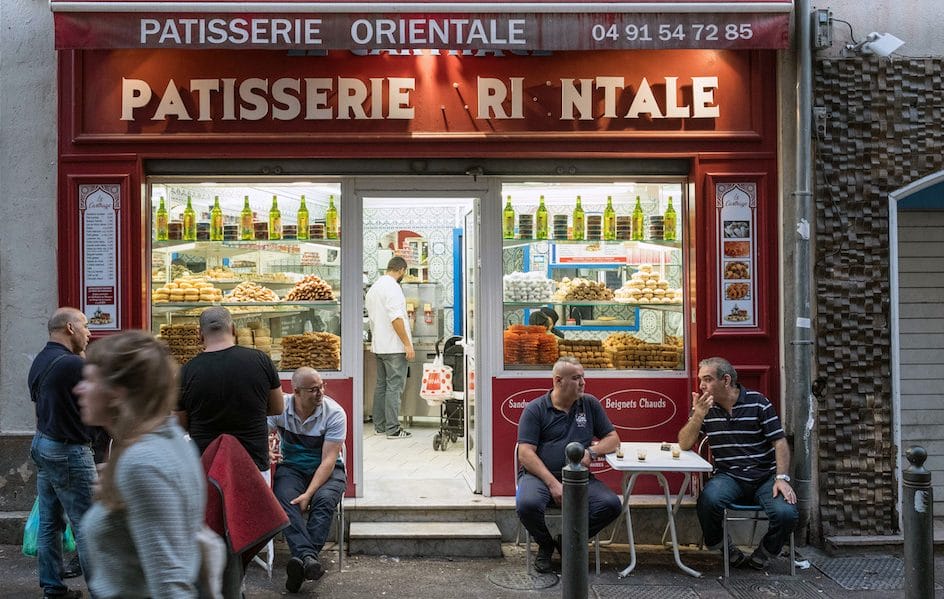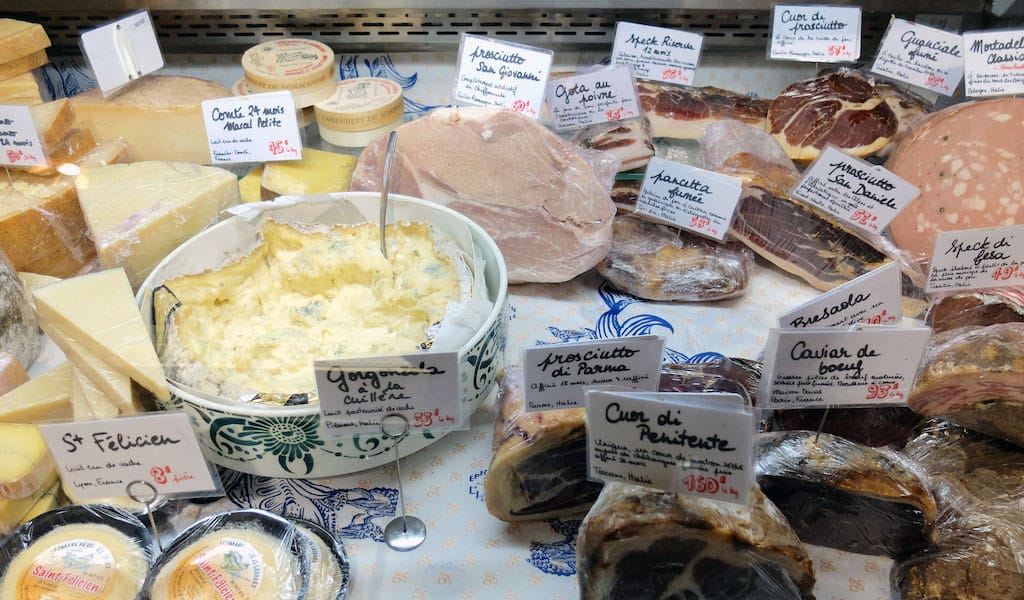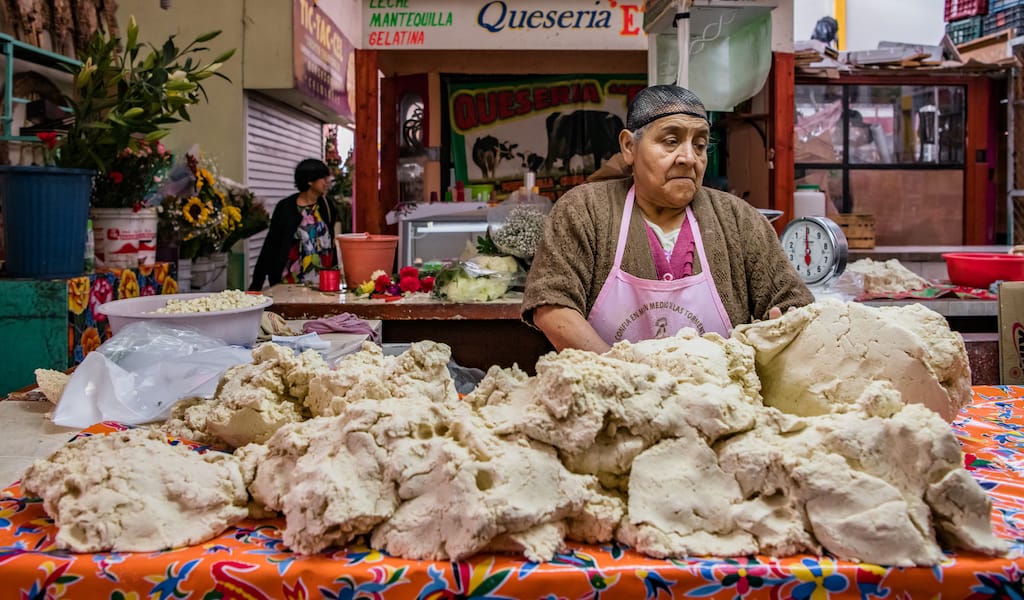Editor’s note: We are very happy to be able to add Marseille to the growing list of cities CB is covering. Our coverage of that city’s deep and fascinating culinary scene begins today, with our report on Marseille’s State of the Stomach.
On the Rue d’Aubagne, Tunisian men dunk bread into bowls of leblebi – a garlicky chickpea soup – as scooters dash by. A dashiki-clad Senegalese woman plucks cassava from the produce market to fry up for lunch. Dusted in flour, Lebanese brothers make falafel sandwiches with pita still warm from their bakery’s oven. A boy buys an Algerian bradj – a date-stuffed semolina bar – to snack on after school as Maghrebi teens in track pants sell single “Marl-bo-ros.”
This multicultural montage unfolds along the main artery of the Noailles neighborhood. Known as the “belly of Marseille” for its abundant edible offerings and central location, the quartier is a concentrated cross section of the city’s immigrant population – and a reminder that Marseille’s identity is influenced as much by France as it is by the other side of the Mediterranean. Walk down the street in Noailles and you are as likely to find men in djelabas sipping Moroccan mint tea at sidewalk tables as you are to find pastis – Provence’s definitive drink – poured in neighborhood bars.
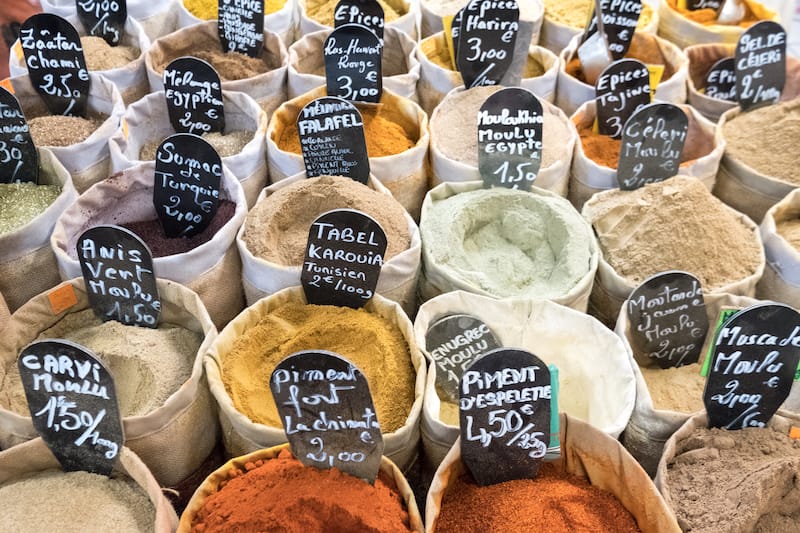
Marseille is technically the capital of Provence – as the airport and tourist offices like to boast, hoping to piggyback on the region’s lofty reputation. You can taste it in the freshly caught squid sautéed á la provençale (with garlic and parsley), the generous glugs of olive oil on everything, and the abundant use of tomatoes – “the local love apples,” as writer MFK Fisher affectionately called them. Yet locals consider themselves to be more Mediterranean than French, and Marseillais above all. This pride is reflected in the culinary historian Emmanuel Perrodin’s favorite phrase: “First you have the sea, then the city, and beyond that is another country called France.”
“First you have the sea, then the city, and beyond that is another country called France.”
Migration has been part of Marseille’s DNA since its beginning. In 600 BC, the port city, christened Massalia, sprouted from the marriage between Gyptis, a Gauloise, and Protis, a Phocaean sailor. For over 2,600 years, merchants, tradesmen, and soldiers – Romans, Comorians, Egyptians – have been steadily streaming in. According to the Agence D’Urbanisme d’Agglomération de Marseille, no other port city on the Mediterranean has had waves of immigrants wash on its shores for so long. Ships stocked with star anise from China and barges loaded with almonds from North Africa also transported people to Massalia’s docks, each one with recipes from their homeland to toss into the melting pot of Marseille cuisine.
The farinata fried by Ligurian sailors begat panisses, the iconic chickpea fritters munched at apèro, AKA happy hour. Corsican pork liver sausage, figatelli, and red-hot Maghreb merguez are summer barbecue staples. While opinions are divided on whether the Greek kakavia or the Italian brodetto di pesce inspired Marseille’s mythical bouillabaisse, the seafaring stew is unmistakably Mediterranean, born from the leftovers of a fisherman’s catch. Once emblematic of the city’s populaire (working class) ethos, bouillabaisse now costs over 60 euros at most restaurants, ironically pricey for the iconic dish of a blue-collar city. Like oysters, the soup has gone from poor to posh. The opposite has happened in Noailles.
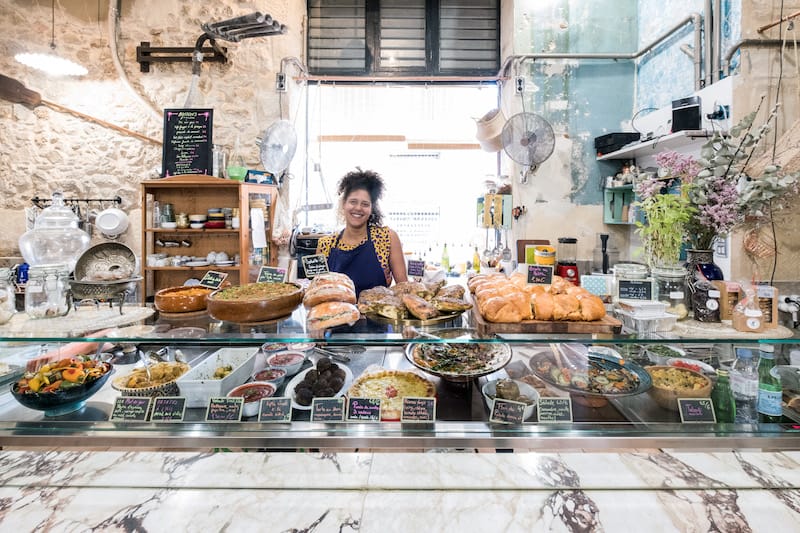
In the 17th century, aristocrats ruled the quartier. Its name and its principal road, Rue des Nobles, was changed in honor of Jacques de Noailles, a gentilhomme marine lieutenant. During Marseille’s belle époque in the last half of the 19th century, the bourgeois moved in to stately hôtel particulier mansions. When they decamped to beach houses at the turn of the century, immigrants flooded in. Corsicans, Italians, and Spanish workers followed by North and West Africans from liberated French colonies. Noailles heaved with the unemployed and undocumented, crammed into buildings becoming increasingly decrepit. And then two of them collapsed.
On November 5, 2018, two dilapidated apartment buildings in Noailles crumbled; the eight individuals who lost their lives were indicative of the neighborhood’s multicultural makeup. The tragedy revealed glaring flaws in the city’s infrastructure. A confirmation that the long-standing mayor Gaudin had focused too much on splashy improvements to boost tourism and business while neglecting the enormous issues in housing, transport and education that many Marseillais faced. The controversial 4-star hotel project (the just-opened Mercure Canebiere) blocks away from the collapse punctuated this disparity – yet another historic building being converted into a luxury hotel as a housing crisis erupted nearby.
Before the disaster, Noailles was actually experiencing its first glimmers of gentrification, sparked by Marseille’s reign as the European Capital of Culture in 2013. That year was a watershed for the port city. The Vieux Port was spiffed up with a widened esplanade to welcome pedestrians as well as a stunning new museum, Mucem. Finally in the spotlight for something besides crime and corruption, oft-scorned Marseille began to shed its clichés as a dirty, dangerous and drug-heavy place. France’s second-largest city became a place to be, rather than a place to avoid. European tourists now arrive on new low-cost flights, and Parisians are whisked south on the 3-hour high speed TGV train.
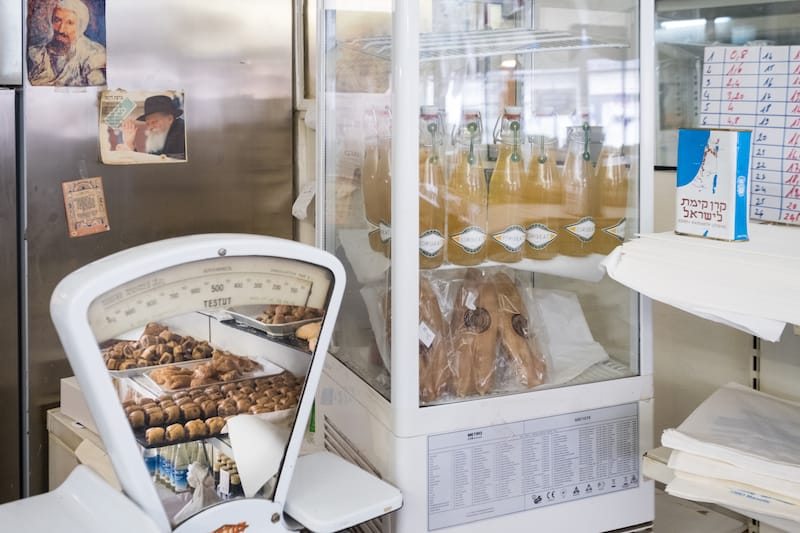
They make a pilgrimage to the Notre-Dame de la Garde Basilica for the nautical ex-votos, marvelous mosaics, and sweeping views from Marseille’s highest point. At her feet, the now hipster hillside village of Vauban is peppered with a popsicle shop, fromagerie, and one of the city’s best pies at la Bonne Mère (AKA the “Good Mother,” the church’s nickname.) Close to the train station, the Friche la Belle du Mai, a tobacco factory turned cultural space, has boosted one of Marseille’s poorest neighborhoods; the nearby Couvent Levat, a convent-turned-art collective opened in 2018, also adds to the creative mix. Across town, Le Corbusier’s Unité d’Habitation apartment complex and the Stade Velodrome are close in proximity but architecturally distant. The modern concrete cruise ship and futuristic white spaceship are testaments to Marseille’s diversity, and lure locals and visitors alike.
Noailles’ cultural evolution started around 2016, when food journalist Julia Sammut opened L’Épicerie Idéal, the grocery store-café on the Rue d’Aubagne. With a pedigree as mixed as the quartier, the enthusiastic epicurean stocks her shelves with foodstuffs from across the Mediterranean including locally made orgeat (an almond drink) from nearby Patisserie Orientale Journo. Julia’s “Noailles Power” passion has lured other outsiders who aren’t dissuaded by the negative stereotypes that locals have for the neighborhood. These neo-Marseillais see Noailles’ rich diversity and history, including the early 19th-century heritage hardware store and herbalist that are still open today.
The trendy Paris Pop-Up collective put their first brick and mortar restaurant in an old notions shop, La Mercerie. Young Top Chef contestant Elle Aflalo’s Yima has an all-female kitchen, including an Algerian grandma who makes traditional pastries. The revved-up food scene is revitalizing the city. Southern chefs who emigrated to Paris are now returning home, opening unpretentious places that make the most of the region’s farmed and fished bounty – like Paul Langlére’s Sepia, housed in a park’s former snack bar near the trendy St. Victor neighborhood.

While there have been rumblings – and graffiti – that Noailles became bobo-ified (bohemian-bourgeois are French hipsters), local institutions are benefiting from the growth. Perpetually packed temple of Tunisian food, Chez Yassine, just opened a second spot, Kouijna Express, dedicated to chapatti – a pita stuffed with meat, an herby omelet, peppers and harissa served on the street in their homeland. The mecca of Maghreb housewares, Jiji Palme D’Or, has spilled into adjacent storefronts, which are teeming with straw baskets, colorful ceramic bowls and woven rugs. Takeout-only Charly Pizza added a dining room for those who prefer their slices sitting down.
This popular pizza joint embodies Marseille’s past, present and future. A 57-year-old institution that was started by a Neapolitan-Algerian couple and passed down to their enthusiastic son, Charly Pizza has weathered the city’s changes. Locals line up for the classic moit moit (half Emmenthal, half anchovy); pizza armenienne, a meaty mess that resembles lahmacun; and even a calantica, a Spanish-Algerian cousin of panisses for the old school Maghreb customers. Consumed at beaches at sunset, before l’OM football matches, and at homes for family dinner, pizza transcends class and race. Just like the city itself.
 July 1, 2020 Épicerie l’Idéal
July 1, 2020 Épicerie l’Idéal
When épiceries first set up shop in France in the Middle Ages, they predominantly sold […] Posted in Marseille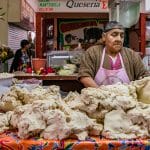 February 5, 2020 Oaxaca
February 5, 2020 Oaxaca
Editor’s note: We are very happy to be able to add Oaxaca to the growing list of cities […] Posted in Oaxaca October 17, 2019 Au Grand Saint-Antoine
October 17, 2019 Au Grand Saint-Antoine
Anthony the Great is the patron saint of pigs, hence why paintings of him often depict […] Posted in Marseille
Published on October 02, 2019
Related stories
July 1, 2020
MarseilleWhen épiceries first set up shop in France in the Middle Ages, they predominantly sold spices – les épices, as their name implies. In the 19th century, they added foodstuffs on their shelves, evolving into magasins d’alimentation générale. Some of these general stores are North African-owned corner shops. Open 24/7, they play an indispensable, yet…
Get to know Oaxaca’s deep culinary heritage on our walk!
February 5, 2020
OaxacaEditor’s note: We are very happy to be able to add Oaxaca to the growing list of cities CB is covering. Our coverage of that city’s deep and fascinating culinary scene begins today, with our report on Oaxaca’s State of the Stomach. Every Sunday, a vendor named Domitila heads out from a village called Etla…
Dive into Marseille’s multicultural stew on our walk!
October 17, 2019
MarseilleAnthony the Great is the patron saint of pigs, hence why paintings of him often depict one at his feet. Some say that a pig accompanied him during his hermetic desert life in the 3rd century. Some say he used pork fat to heal skin disease – one of the acts that is linked to…







































